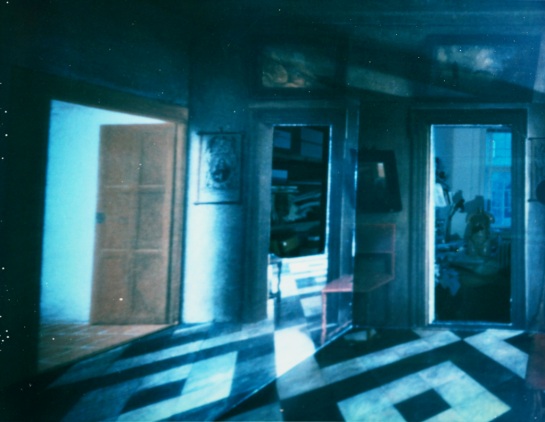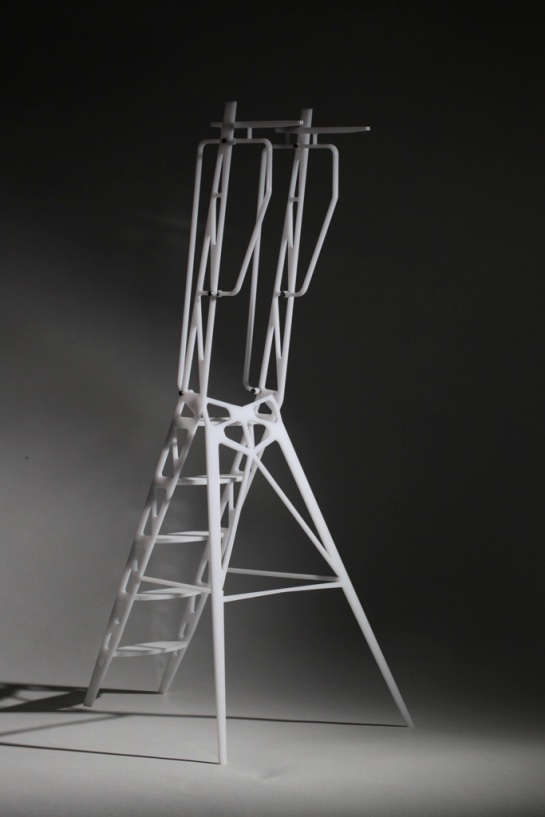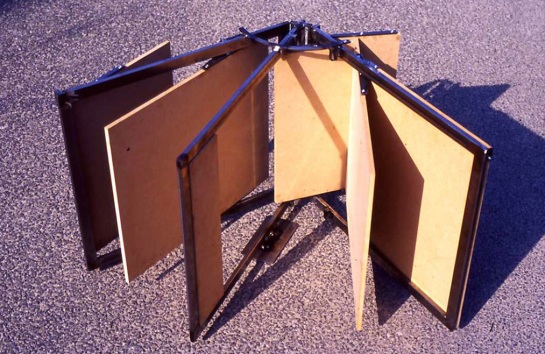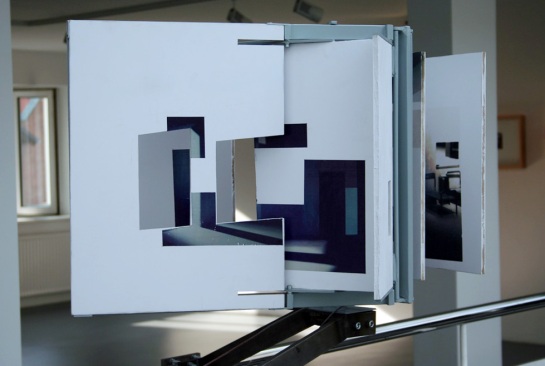I have started working on this body of work again, although working from the other direction now I have a better idea of what they support. I will post some more as I go along.
Peepshow
More Van Hoogstraten
A while ago I posted some pictures taken through a model of Samuel Van Hoogstraten’s peepshow:
https://natchard.com/2011/09/30/403/
I dug out some of the test shots, where some of the less successful ones reveal the seam between the material and pictorial space.
They are shot using a home made camera. It uses a pinhole to get the depth of field to make sense of both the space inside the box and my studio behind (the model is much smaller than the real peepshow). The camera has a lot of shift so that the image captures the whole available view with close to the ideal resolution of the anamorphic projection.
In the image above, where the lighting is not even enough, you can see the form of the box more clearly than in the previous shots. This image does not have the light shining up through the cut out doors.
Test (above) with too short an exposure so that the light shining though the cut out door is exposed but hardly anything else. It does, however, isolate that light to compare with the other shots. The light is only shining though one of the doors at this stage. When shining though both the shadows present an even greater paradox.
Compare the photographs above with the more balanced exposure above. All are shot using Polaroid 669 stock. The demise of Polaroid is a great loss. I have not tried the Impossible project’s material yet – all my Polaroid backs are for peel-apart film as I mostly used 669 and type 59.
A test for the reverse view (above). The reflections of the (painted) light from the window undermines the form of the ceiling’s timber beams.
A less balanced exposure again reveals the form of the box rather than the pictorial space of the room.
Peepshow Ladders Part Two
In an earlier post (https://natchard.com/2011/10/02/peepshow-ladders/) I showed a proposal for some ladders to site a peepshow at a high horizon so that it could incorporate the rest of the items in the room as part of the content of the peepshow. The pictures in that post were of the Mk. 1 ladder, a sketch model. The subsequent two versions developed the ladder design so that it could be cut out of standard sheet sizes economically and have a little more stability and stiffness. Here are the three main versions.
Open Peepshow
The picture above shows the frame and plates for an experimental peepshow that is open and has adjustable planes. It was a test to find a measure for the accommodation the eye would allow from an ideal anamorphic distortion. The two drawing below were made to calculate that distortion for a particular position of the plates for the main two views. The plates have holes cut in them to composit the peepshow views with the place in which it is found, in this case the iCP gallery in Hamburg.
The anamorphic images on the plates are derived from a model (furniture by Karen Gamborg Knudsen and Frederik Petersen) with the two principle views shown below.
The following photographs show various views through the peepshow





























